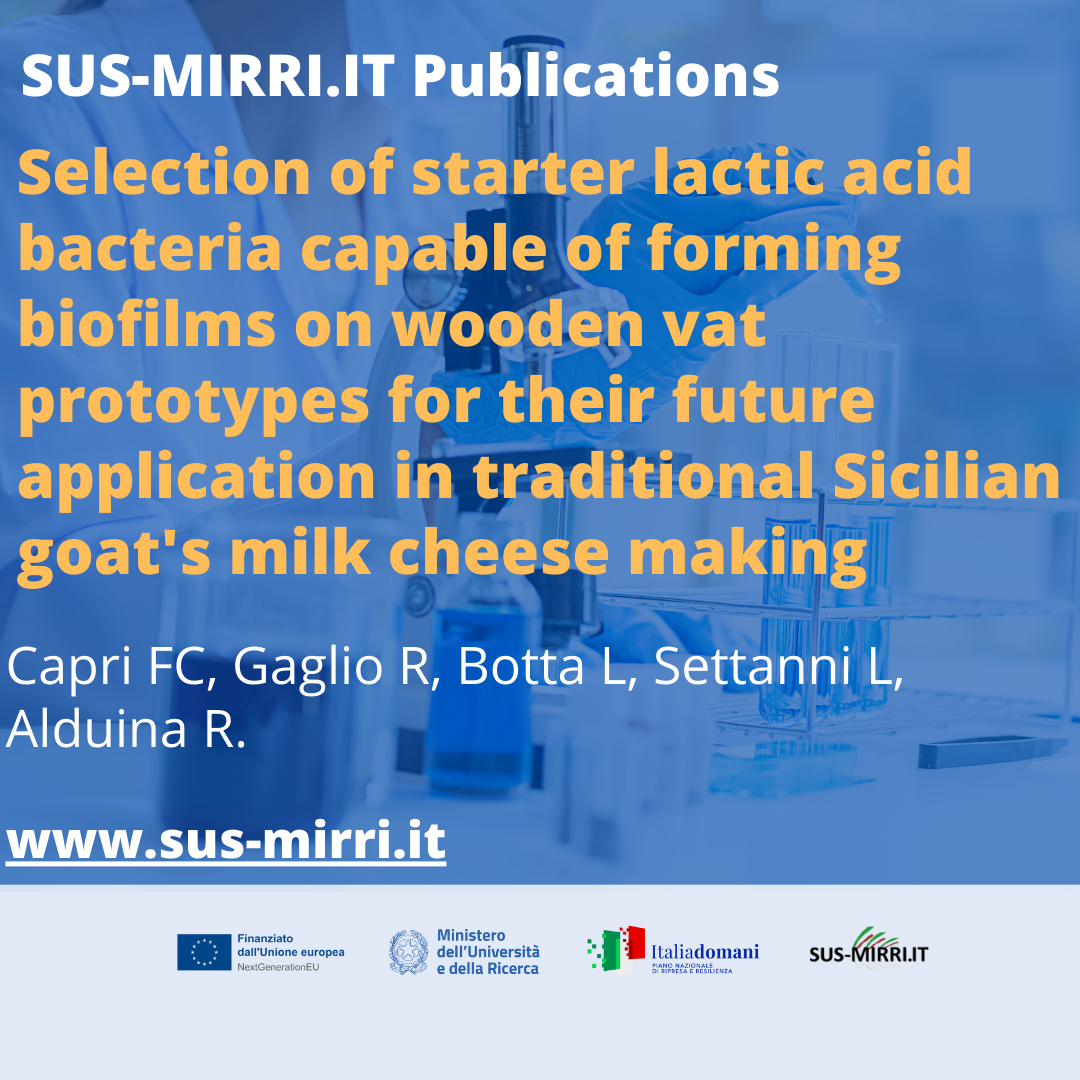Capri FC, Gaglio R, Botta L, Settanni L, Alduina R. 2024 Selection of starter lactic acid bacteria capable of forming biofilms on wooden vat prototypes for their future application in traditional Sicilian goat’s milk cheese making- International Journal of Food Microbiology 419, 16 July 2024, 110752 https://doi.org/10.1016/j.ijfoodmicro.2024.110752
Abstract
In this study, 327 presumptive lactic acid bacteria (LAB) were isolated from goats’ milk acid curds produced at a Sicilian dairy farm with the aim to identify potential starter cultures for traditional cheeses. All isolates were first processed by randomly amplified polymorphic DNA (RAPD)-PCR analysis. This approach identified 63 distinct strains which were evaluated for their acidifying capacity. Only 15 strains specifically stood out for their acidification capacity and were identified through 16S rRNA gene sequencing as Lactococcus lactis (11 strains) Enterococcus faecalis (three strains), and Ligilactobacillus animalis (one strain). Notably, all 15 LAB isolates produced bacteriocin-like inhibitory substances and anti-biofilm compounds, against both planktonic and biofilm forms of Listeria monocytogenes, Salmonella Enteritidis, Escherichia coli, and Staphylococcus aureus, albeit at varying levels. Among these 15 LAB, En. faecalis RGM25 and Lc. lactis RGM55, susceptible to five antibiotics tested, were put in contact with wooden vat prototypes, because all equipment used in traditional cheese production in Sicily are made of wood. Scanning electron microscopy and bacterial plate counts of the wooden vat prototypes showed the development of biofilms at levels of approximately 6.0 log CFU/cm2. Overall, this study contributes to establishing a custom-made LAB starter cultures with bio-preservatives properties for Sicilian cheese productions.
Read more at: https://www.sciencedirect.com/science/article/pii/S016816052400196X?via%3Dihub



